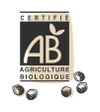Produce quality seeds
Seed production requires special vigilance throughout the production cycle. Some steps are even crucial in determining the quality and yield of the seed produced.
1. Sowing and flowering
Seed crops can be grown in open fields or under cover. Open-field production allows for the cultivation of large areas. While covered production allows for pollination control through the addition of insects, temperature, and simplified weed control.
Seed production can be sown, depending on the species:
- on the same date as the consumption crop (this is the case for wheat)
- with sowing dates offset from those of the consumer crop, to allow the plant to flower at the right time (this is the case for endive seeds)
- with several sowing dates on the same plot in order to guarantee good fertilization of the mother plants (this is the case for hybrid varieties for certain species, such as corn).
Flowering is a very important stage in seed production. All conditions must be met to ensure proper fertilization.
- the pollen production of male flowers must correspond to the period of pollen reception of female flowers.
- the temperature must be ideal for the diffusion of pollen
- pollinators must be present in sufficient quantity.
To promote pollination, hives can be added. In indoor production, pollinating insects are varied (bees, bumblebees, flies). The propagator-farmer must manage his crop by taking into account various constraints. For example, carrots are sensitive to a lack of water during flowering (in the event of drought stress, the plant may not produce seeds). The farmer must therefore ensure that he irrigates at the right time for the plant without disturbing the pollinating insects! He must also manage the regrowth of weeds that have benefited from the water provided without damaging the crop by weeding.
2. The harvest
When the seed crop has reached maturity, the humidity level is monitored. It must be neither too high nor too low to avoid damaging the seed during harvesting and transport. Depending on the species and the surface area, harvesting can be done mechanically (combine harvester) or manually. Manual harvests can be staggered to obtain a maximum of seeds at optimum maturity. However, this represents a higher labor cost. Each species, and sometimes even each variety, has a specific harvesting method, so machines are still rare, but a few are beginning to be developed and marketed. For example, for onions, a machine has been able to replace labor in the delicate harvesting of umbels for several years.
Once the seed is harvested, it is dried so that it can be stored in good conditions. It can then be sorted to market only the best seeds.
Seed quality, once developed and optimized in the field, requires sorting. Batch traceability is then ensured until the product is put on sale thanks to specific labeling.
3. Seed sorting, a key step in obtaining quality seeds
Sorting allows the transition from raw seeds (containing plant debris, broken or too light seeds, and weed seeds) to clean, high-quality seeds. This requires several sorting steps. The machines used vary depending on the species, but the goal remains the same: to obtain clean seeds with high germination quality.
First, the lightest and heaviest waste are eliminated (dust, plant debris).
Sorting is then carried out according to the shape of the seeds: round (peas), long (chervil), curved (carrot)... Sorting also takes into account the nature of the seed surface: smooth (bean), rough (beetroot), hairy or bearded (ryegrass). Each species has its own shape and size. Sorting therefore uses these characteristics to keep only the good species.
Finally, the seeds are calibrated: the smallest and lightest are eliminated: the objective is to keep only the good seed to guarantee good germination for the user.
To ensure traceability, each batch of seeds (associated with a number assigned at the start of production) is sorted individually. The machines are also thoroughly cleaned between each batch.
4. Guarantee quality all the way to the customer
Once the seeds are sorted, they are stored in a cold room until packaging. Temperature and humidity are regulated to ensure optimal seed preservation. Seeds are packaged in different volumes depending on their recipients.
On each sachet (or bag for larger volumes), mandatory information appears on the label:
-the name of the species
-the full name of the variety
-the grammage in weight or number of seeds
-the batch number of the seed.
This information allows for batch traceability. Quality is therefore guaranteed since, in the event of a problem with a batch, it can be completely withdrawn from sale.
Sorting and bagging reveal and preserve the quality developed during production. Traceability from field to bag is a guarantee of quality for the user.





